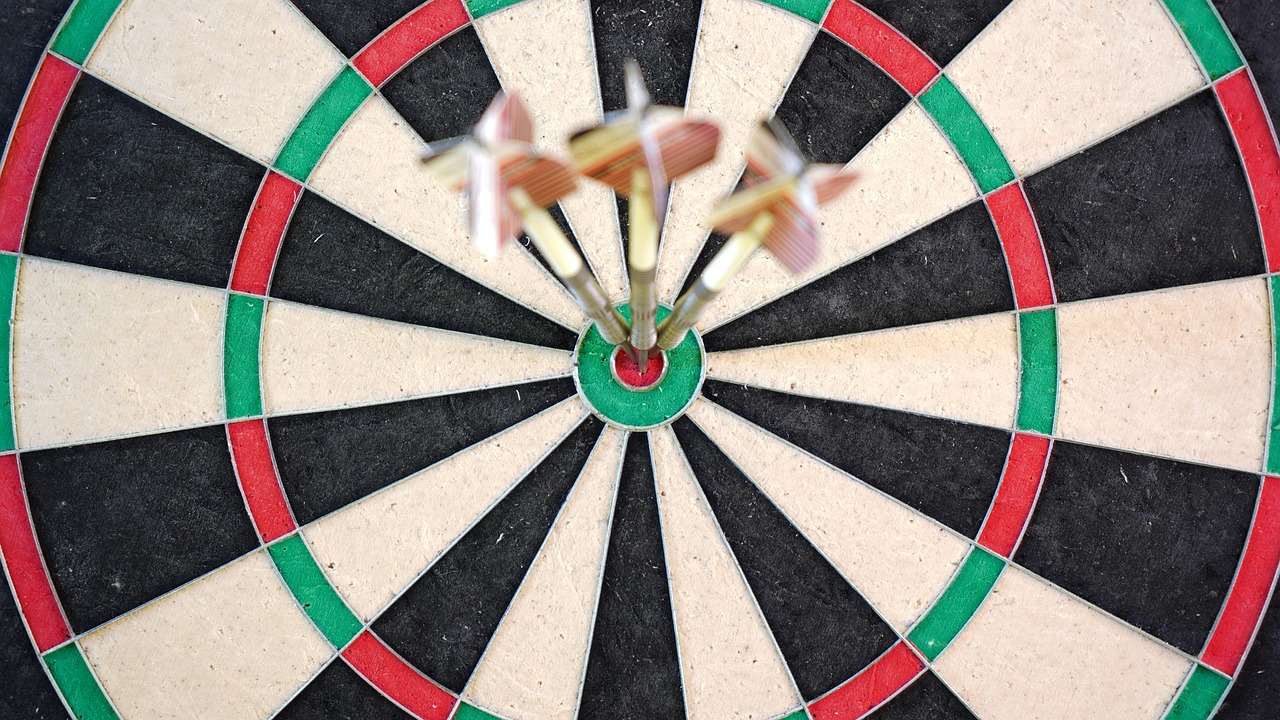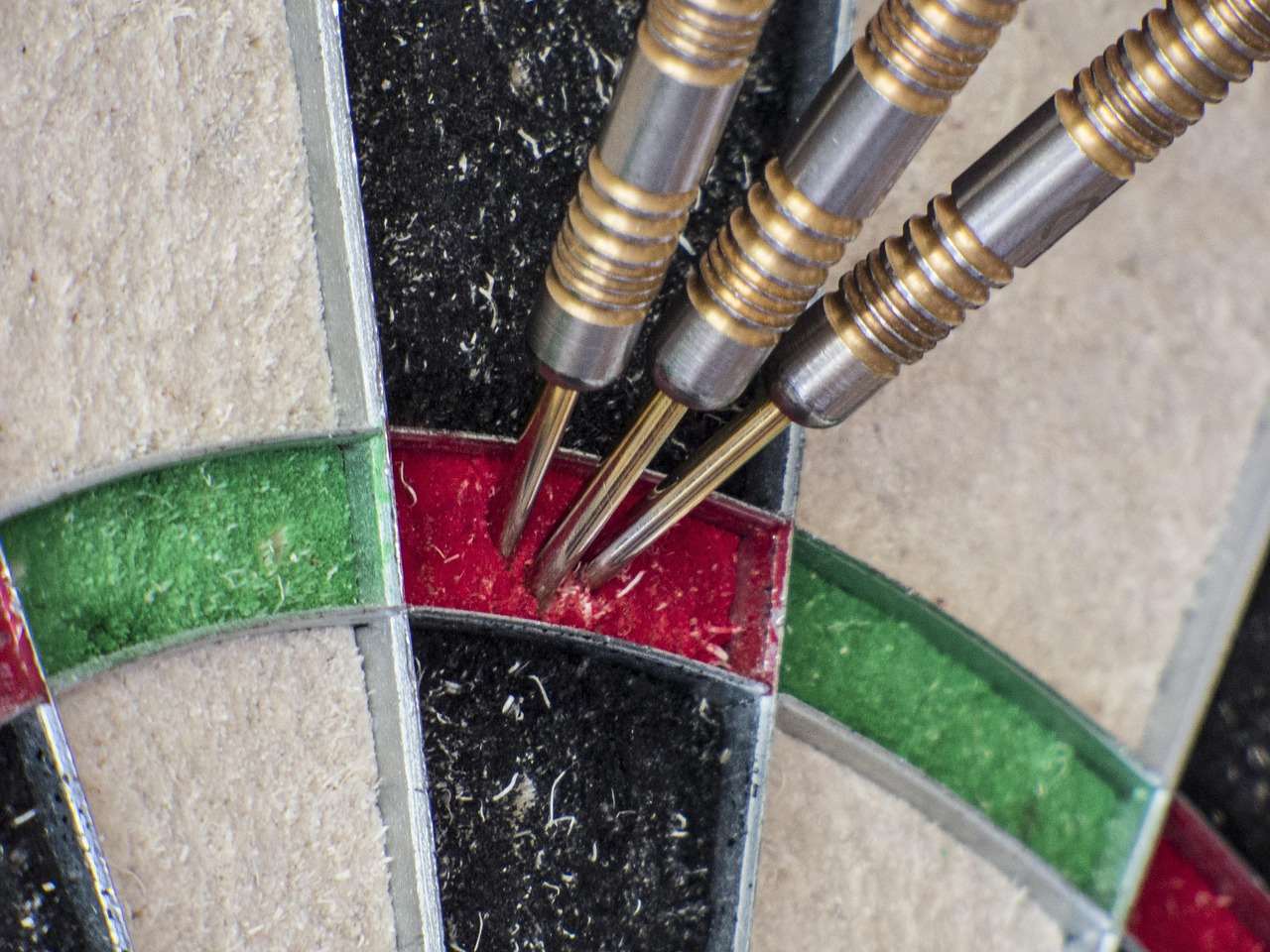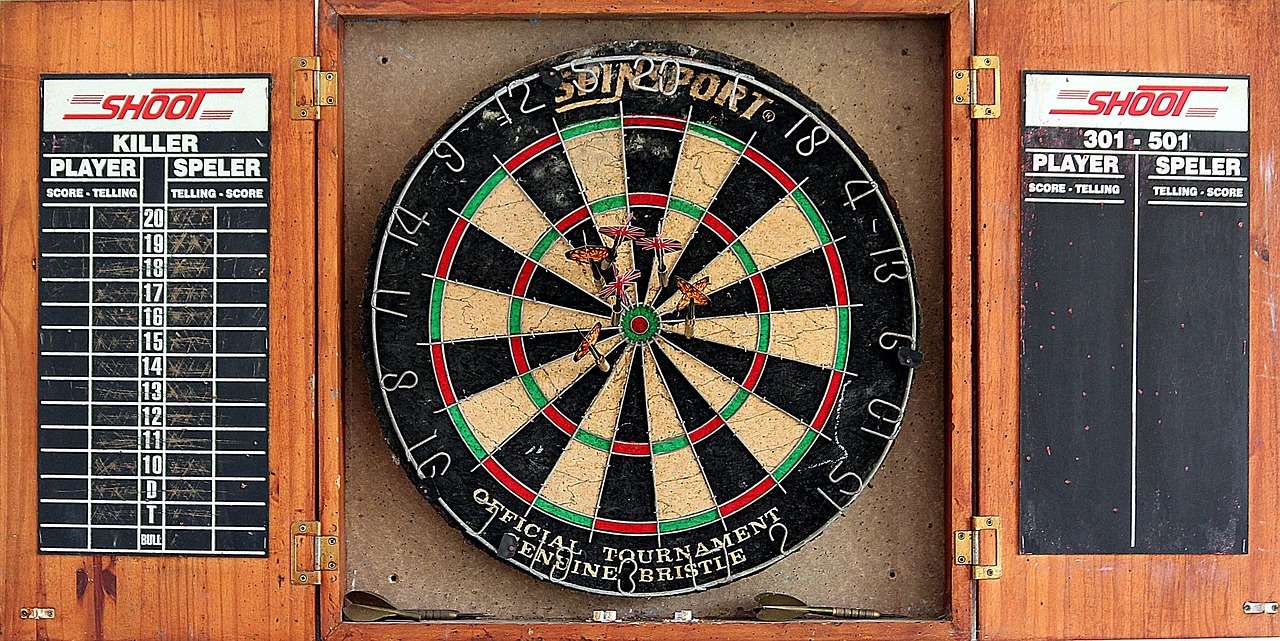Understanding the handicap system review process is crucial for ensuring fairness and accuracy in any competitive activity that utilizes handicaps. This article will delve into the various aspects of this process, from its core principles to practical implementation, helping you understand how handicaps are adjusted and maintained.
⚠️ Still Using Pen & Paper (or a Chalkboard)?! ⚠️
Step into the future! The Dart Counter App handles all the scoring, suggests checkouts, and tracks your stats automatically. It's easier than you think!
Try the Smart Dart Counter App FREE!Ready for an upgrade? Click above!
Understanding the Need for a Handicap System Review Process
A handicap system aims to level the playing field, allowing players of varying skill levels to compete fairly. However, a handicap isn’t static; it needs to be regularly reviewed and adjusted to reflect a player’s current ability. Without a robust handicap system review process, the system becomes inaccurate, leading to unfair advantages and disadvantages. This can be particularly problematic in competitive settings where integrity and fairness are paramount.
Think of it like this: a player who consistently improves needs their handicap lowered to reflect their progress. Conversely, a player experiencing a slump might need their handicap increased. The goal is to provide a dynamic handicap that accurately represents a player’s performance over time.

Key Elements of an Effective Handicap System Review Process
A well-designed handicap system review process incorporates several essential elements. These elements ensure the system remains accurate, fair, and transparent.
- Regular Evaluation Periods: Establish specific timeframes for reviewing handicaps. This could be monthly, quarterly, or annually, depending on the frequency of competition and the rate at which players’ abilities change.
- Data Collection: Implement a system for collecting performance data. This could involve tracking scores, statistics, or other relevant metrics. The more comprehensive the data, the more accurate the review process will be.
- Defined Adjustment Criteria: Clearly define the criteria used to adjust handicaps. This should include specific performance thresholds that trigger an adjustment, as well as the magnitude of the adjustment.
- Transparency and Communication: Communicate the handicap system review process clearly to all participants. This includes explaining the evaluation periods, data collection methods, adjustment criteria, and appeal process.
- Appeal Process: Provide a mechanism for players to appeal handicap adjustments they believe are unfair or inaccurate. This ensures that players have a voice in the process and that any errors can be rectified.
Without these key elements, your **handicap system review process** might not be as reliable as it should be. Remember to prioritize fairness and transparency to foster trust and participation.
Methods for Conducting a Handicap System Review
There are several methods you can use to conduct a handicap system review. The best approach will depend on the specific sport or activity, the available data, and the resources you have available.
- Statistical Analysis: Use statistical methods to analyze performance data and identify players whose handicaps are significantly out of sync with their current ability. This might involve calculating averages, standard deviations, or other relevant statistics.
- Peer Review: Involve other players or experts in the review process. They can provide valuable insights into a player’s performance and help identify any factors that might not be reflected in the data.
- Performance Observation: Observe players during competition to assess their performance and identify any discrepancies between their handicap and their actual ability.
- Self-Assessment: Allow players to self-assess their performance and provide input into the review process. This can be particularly useful for identifying factors that might not be easily quantifiable, such as changes in equipment or playing conditions.
Combining different methods can often provide the most comprehensive and accurate review.
Implementing a Handicap System Review Process: Practical Steps
Implementing a handicap system review process involves several practical steps. Here’s a breakdown:
- Define the Scope: Determine which players or groups will be included in the review process.
- Gather Data: Collect relevant performance data for each player.
- Analyze Data: Analyze the data to identify players whose handicaps may need adjustment.
- Conduct Peer Reviews (if applicable): Solicit input from other players or experts.
- Make Adjustments: Adjust handicaps based on the data analysis and peer reviews.
- Communicate Changes: Notify players of any handicap adjustments and explain the reasons for the changes.
- Handle Appeals: Address any appeals promptly and fairly.
- Document the Process: Document the entire handicap system review process, including the data collected, the analysis performed, the adjustments made, and the reasons for those adjustments. This documentation is essential for transparency and accountability.
Remember that **consistent data collection** and **clear communication** are key throughout the entire process. Don’t underestimate the importance of having a well-documented and easily understood process.

Addressing Common Challenges in the Handicap System Review Process
Several challenges can arise during the handicap system review process. Being aware of these challenges can help you mitigate them and ensure a smoother and more effective review.
- Data Inaccuracy: Inaccurate or incomplete data can lead to flawed handicap adjustments. Implement robust data collection methods to minimize errors.
- Subjectivity: Relying too heavily on subjective assessments can introduce bias into the review process. Use objective data whenever possible.
- Resistance to Change: Players may resist handicap adjustments, especially if they result in a perceived disadvantage. Communicate the rationale for the adjustments clearly and provide opportunities for appeal.
- Maintaining Consistency: Ensuring consistency in the application of the adjustment criteria is crucial for fairness. Develop clear guidelines and train those involved in the review process.
- Gaming the System: Some players may attempt to manipulate their performance to influence their handicap. Implement measures to detect and prevent such behavior.
Addressing these challenges requires a proactive approach, including careful planning, clear communication, and ongoing monitoring.
The Role of Technology in Streamlining the Handicap System Review Process
Technology can play a significant role in streamlining and improving the handicap system review process. Automated data collection, analysis, and communication tools can save time, reduce errors, and enhance transparency. Here are a few examples:
- Handicap Tracking Software: Software specifically designed for handicap tracking can automate data collection, calculate handicaps, and generate reports.
- Spreadsheet Software: Spreadsheet software can be used to analyze performance data and identify players whose handicaps may need adjustment.
- Online Communication Platforms: Online platforms can be used to communicate handicap adjustments to players, solicit feedback, and manage appeals.
- Mobile Apps: Mobile apps can allow players to track their performance, submit scores, and access handicap information on the go.
By leveraging technology, you can make the **handicap system review process** more efficient, accurate, and user-friendly. This also ensures that the process of implementing how to make darts fairer with handicap rules is more consistent and effective.
Examples of Handicap System Review Processes in Different Sports
The specific details of the handicap system review process will vary depending on the sport or activity. Here are a few examples:
- Golf: Golf utilizes a sophisticated handicap system managed by organizations like the USGA. The system uses a formula that considers the player’s best scores over a recent period, and adjustments are made automatically based on pre-defined criteria.
- Bowling: Bowling handicap systems typically involve calculating the difference between a bowler’s average score and a target score. Adjustments are made periodically based on changes in the bowler’s average.
- Darts: In darts, handicap systems often involve adjusting the starting score or the number of darts allowed per turn. The handicap system review process may involve observing players’ performance and adjusting their handicaps based on their consistency and accuracy. In scenarios where it’s necessary to consider modifying rules for mixed-level dart players, the handicap review becomes all the more important.
Studying examples from different sports can provide valuable insights into best practices and help you tailor your own handicap system review process to meet the specific needs of your activity.
Ensuring Fairness and Transparency in the Handicap System Review Process
Fairness and transparency are paramount in any handicap system review process. Without these qualities, the system will lack credibility and may discourage participation.
- Establish Clear Rules: Define the rules of the system and communicate them clearly to all participants.
- Use Objective Data: Rely on objective data whenever possible to minimize bias.
- Provide Transparency: Make the data analysis and adjustment criteria transparent.
- Offer an Appeal Process: Provide a fair and accessible appeal process.
- Document Everything: Document the entire process to ensure accountability.
- Regular Audits: Conduct regular audits of the system to identify any potential biases or inaccuracies.
By prioritizing fairness and transparency, you can build trust in the handicap system and foster a positive and competitive environment. This is particularly important when creating creative dart rules for parties and social gatherings to ensure everyone feels included.
The Impact of Handicaps on Competitive Balance
A well-implemented handicap system, complete with a rigorous **handicap system review process**, can significantly impact competitive balance. By leveling the playing field, handicaps allow individuals of different skill levels to participate meaningfully and have a chance to win. This can increase participation, enhance enjoyment, and foster a more inclusive competitive environment. Using these methods can make playing simplified 501 game rules for novice players more enjoyable and competitive.

Beyond the Numbers: Qualitative Factors in Handicap System Review
While quantitative data forms the backbone of any handicap system review process, it’s crucial not to overlook qualitative factors. These less tangible aspects can significantly influence a player’s performance and, consequently, the fairness of their handicap. Consider these points during reviews:
- Equipment Changes: A player switching to new equipment (e.g., different darts, clubs, or shoes) might experience a temporary dip or surge in performance that doesn’t accurately reflect their underlying ability.
- Injury or Illness: A recent injury or illness can obviously impact performance. Temporary adjustments may be warranted in such cases, with a clear plan for re-evaluation upon recovery.
- Mental State: A player’s mental state can significantly affect their game. Stress, anxiety, or lack of motivation can lead to inconsistent performance. While difficult to quantify, these factors should be considered during peer reviews or self-assessments.
- Changes in Practice Habits: A player who significantly alters their practice routine (more or less practice) may experience a corresponding change in their skill level.
Incorporating these qualitative factors requires a more holistic approach to the **handicap system review process**, involving communication, observation, and a degree of subjective judgment. However, failing to consider them can lead to inaccurate handicaps and a perception of unfairness.

The Future of Handicap System Review Processes
The future of handicap system review processes is likely to be characterized by increased automation, data analytics, and personalization. Advances in technology will enable more sophisticated data collection and analysis, leading to more accurate and dynamic handicaps. Machine learning algorithms may be used to identify patterns in player performance and predict future performance, further improving the accuracy of the system. It’s also useful to check Basic Darts Fundamentals for Beginners if you want to review your skills.
Furthermore, handicap systems may become more personalized, taking into account individual factors such as playing style, physical characteristics, and mental state. This could lead to a more nuanced and equitable system that better reflects each player’s unique abilities and challenges.
Conclusion
The handicap system review process is a critical component of any fair and competitive activity. By understanding the key elements, implementing practical steps, addressing common challenges, and leveraging technology, you can create a robust and effective system that levels the playing field and promotes participation. Remember to prioritize fairness, transparency, and communication to build trust and foster a positive and competitive environment. It’s an ongoing process, so continuous improvement and adaptation are essential for maintaining the integrity of the system. Take the time to evaluate your current processes and identify areas for improvement to ensure your handicap system is as accurate and equitable as possible. Begin implementing these strategies today for a more balanced and enjoyable experience for all participants!
Hi, I’m Dieter, and I created Dartcounter (Dartcounterapp.com). My motivation wasn’t being a darts expert – quite the opposite! When I first started playing, I loved the game but found keeping accurate scores and tracking stats difficult and distracting.
I figured I couldn’t be the only one struggling with this. So, I decided to build a solution: an easy-to-use application that everyone, no matter their experience level, could use to manage scoring effortlessly.
My goal for Dartcounter was simple: let the app handle the numbers – the scoring, the averages, the stats, even checkout suggestions – so players could focus purely on their throw and enjoying the game. It began as a way to solve my own beginner’s problem, and I’m thrilled it has grown into a helpful tool for the wider darts community.